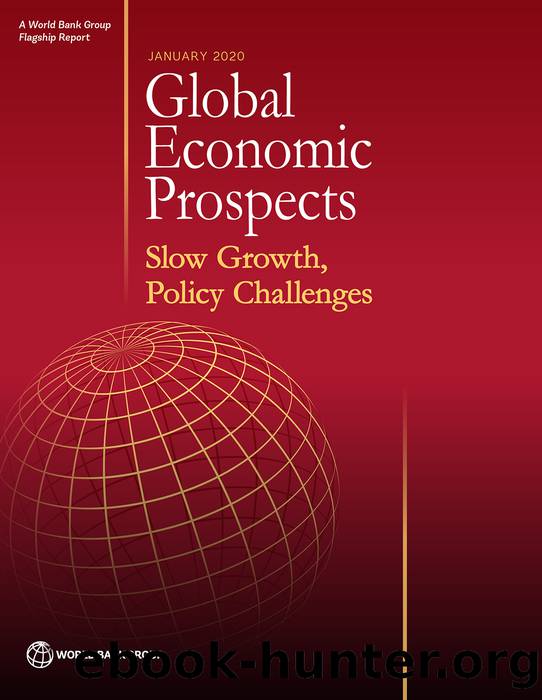Global Economic Prospects, January 2020 by World Bank Group

Author:World Bank Group
Language: eng
Format: epub
Policy options
Coordinated policy efforts are required to achieve stronger productivity growth, notable reductions in extreme poverty, and a narrowing of the significant income gap with the rest of the world. There are four strands of policy options that emerge from the findings of this box.
Improving factors of production
Boosting human capital and leveraging demographic dividends. Improving human capital has been an important source of productivity growth in SSA. Continued investment and increased spending on health care, including greater provision of treatment for highly prevalent conditions such as malaria and HIV/AIDS, could raise productivity of the labor force and life expectancy in general (Figure 2.6.1.5.A; Asiki et al. 2016; Barofsky, Anekwe and Chase 2015; Ferreira, Pessôa and Dos Santos 2011). Increased life expectancy due to improved health care also generates incentives to invest in education (Cervellati and Sunde 2011). In Ethiopia, a rapid decline in fertility rates between 1995-2015, rising incomes, and falling poverty rates reflected an approach combining improvements in education and health, family planning, and increased economic opportunity (World Bank 2019aa). Harnessing the regionâs potential demographic dividend from declining fertility rates and falling dependency ratios requires policies that support female empowerment, including education, health care, and greater labor market access for women (Figure 2.6.1.5.B; Bloom, Kuhn and Prettner 2017; Groth and May 2017; Kalemli-Ozcan 2003). As the ratio of the young dependent population to the working-age population declines in SSA, resources could be freed up to invest in the health and education of the young, boosting the productivity of the future labor force and spurring per capita growth (Ashraf, Weil and Wilde 2013).
Figure 2.6.1.5 Prospects for productivity growth in SSA
Continued improvements in health care could raise life expectancy and the overall productivity of the labor force, as increased life expectancy also generates incentives to invest in education. Sub-Saharan Africa could harness a significant demographic dividend, as falling fertility rates lead to a lower dependency ratio. Owing to limited access to resources and training, crops tended by women yield one-third less per hectare than those of men; a similar margin applies to profits earned by female entrepreneurs. To meet the SDGs by 2030 will require investment spending of about 7 percent of GDP per year. Reducing trade costs in SSA will help accelerate regional and global integration. Conflicts have been rising in the region, particularly acts of violence against civilians.
Download
This site does not store any files on its server. We only index and link to content provided by other sites. Please contact the content providers to delete copyright contents if any and email us, we'll remove relevant links or contents immediately.
International Integration of the Brazilian Economy by Elias C. Grivoyannis(91281)
The Radium Girls by Kate Moore(11921)
Turbulence by E. J. Noyes(7936)
Nudge - Improving Decisions about Health, Wealth, and Happiness by Thaler Sunstein(7615)
The Black Swan by Nassim Nicholas Taleb(7010)
Rich Dad Poor Dad by Robert T. Kiyosaki(6405)
Pioneering Portfolio Management by David F. Swensen(6226)
Man-made Catastrophes and Risk Information Concealment by Dmitry Chernov & Didier Sornette(5921)
Zero to One by Peter Thiel(5686)
Secrecy World by Jake Bernstein(4646)
Millionaire: The Philanderer, Gambler, and Duelist Who Invented Modern Finance by Janet Gleeson(4376)
The Age of Surveillance Capitalism by Shoshana Zuboff(4210)
Skin in the Game by Nassim Nicholas Taleb(4162)
Bullshit Jobs by David Graeber(4095)
The Money Culture by Michael Lewis(4076)
Skin in the Game: Hidden Asymmetries in Daily Life by Nassim Nicholas Taleb(3929)
The Dhandho Investor by Mohnish Pabrai(3699)
The Wisdom of Finance by Mihir Desai(3654)
Blockchain Basics by Daniel Drescher(3507)
